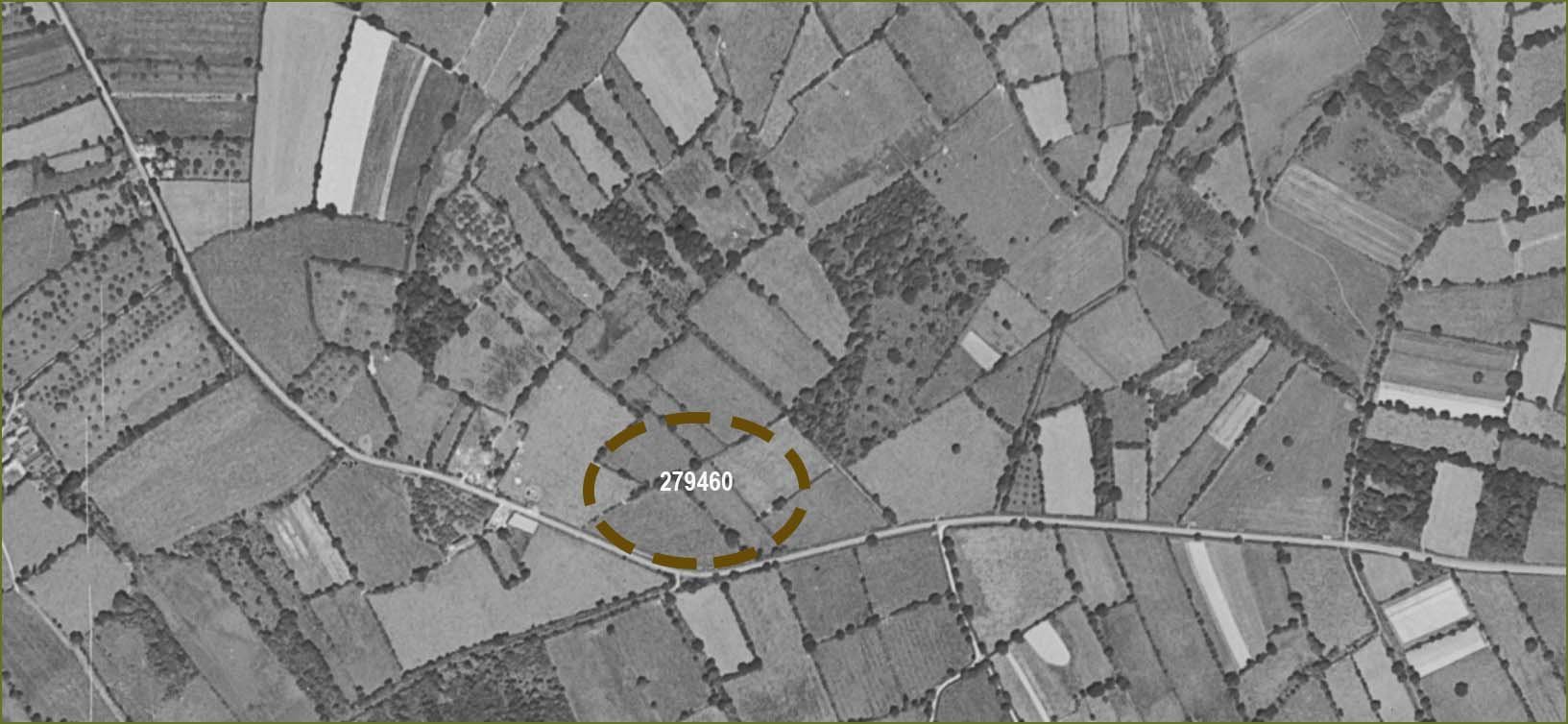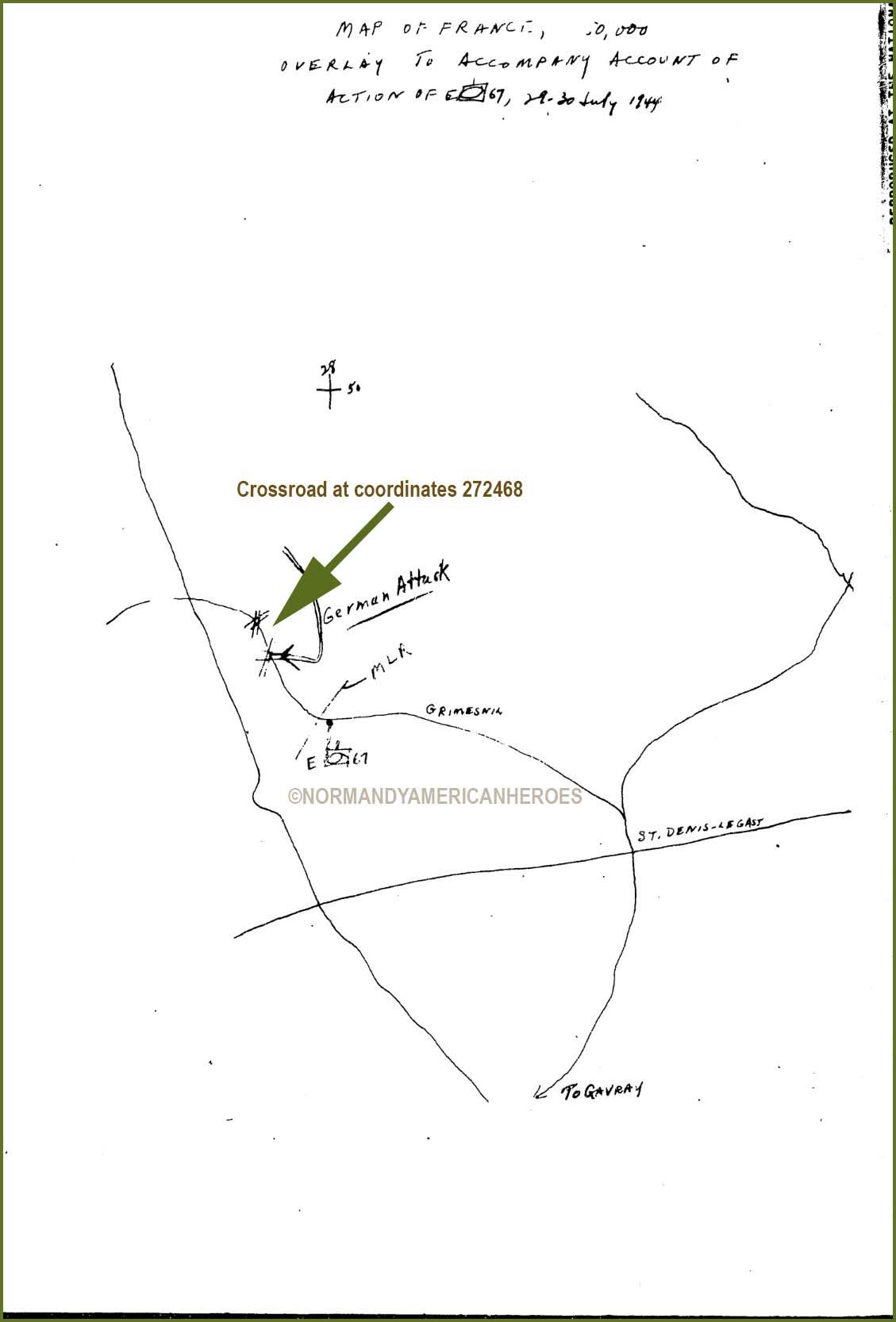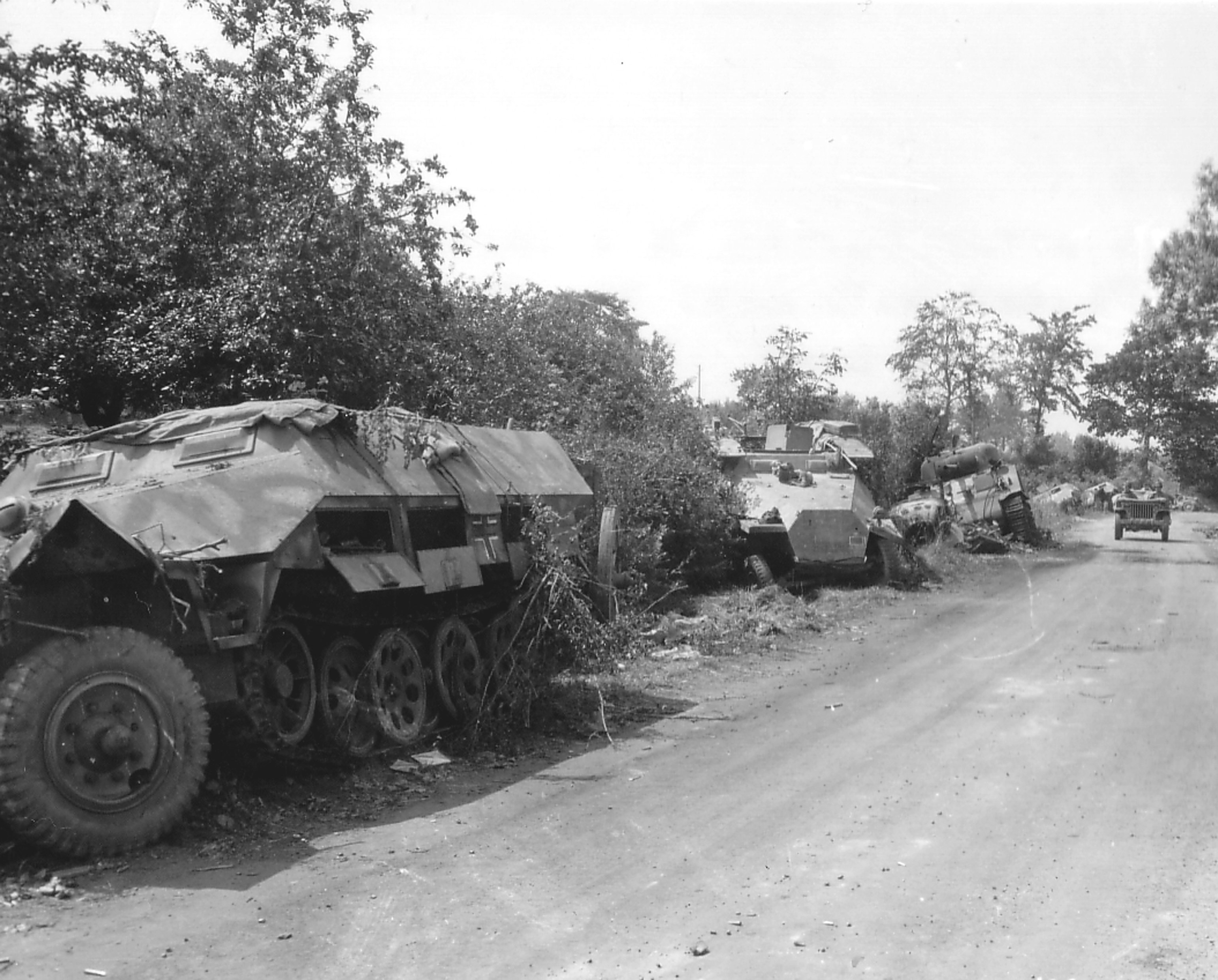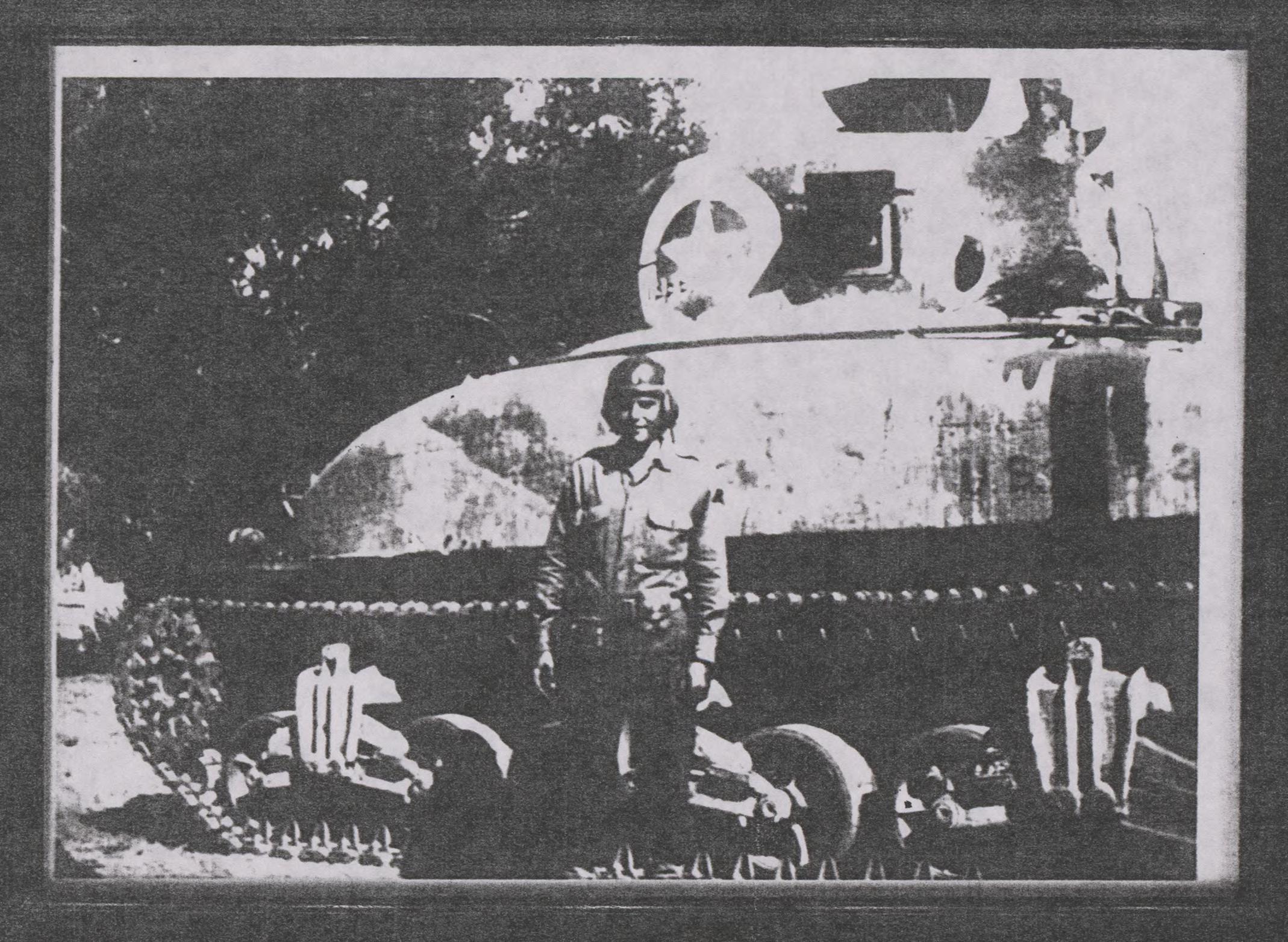On July 29th, 1944, Captain James R. McCartney commanding officer of “E” Company of the 2nd Battalion of the 67th Armored Regiment had brought his company in Grimesnil and set up his bivouac area at coordinates 279460 (See map below) at the east of Captain Walter C. Johnson’s commanding post.

“E” Company at that time was in good shape despite the rough fighting during the previous evening, Captain McCartney did a mistake but it turned to be a profitable one. Once the assembly area set up he thought he lost three tanks during the previous fighting, requisitioned and received three new Sherman tanks, in reality he only has lost one. In addition, a section of “D” Company commanded by Lieutenant James Bell Heins Jr. was separated from the rest of the company and showed up with “E” Company with two tanks in support, making a total of twenty tanks with “E” Company on the night of July 29th to the 30th.
Around 0830pm Captain James R. McCartney and his men were assigned the mission to place a roadblock at coordinates 272468 (see map below) and another one at coordinates 271472. In the meantime he was on the radio with two half-tacks from “I” Company of the 41st Armored Infantry Regiment waiting for him at the first crossroad. Six tanks were used and turned into obstacles to create the roadblocks, once on position, commanders turned off their engines.

Captain James R. McCartney statement: “About 1120pm or 1130pm, as I was standing by the lead tank, I heard the unmistakably regular ‘Click, Click, Click’ of German infantrymen coming down toward the road junction (272468). I walked to the intersection with my jeep driver, and thinking I saw a vehicle coming down that road I hollered: ‘Is that a friendly vehicle?’ There was no answer. After a few seconds’ delay I could hear the doughs fixing their bayonets and the infantry suddenly opened fire down the road. My lead tank then opened up, and then a German self-propelled 75mm on a Mark IV chassis started firing. With fire coming from three directions, I hit the dirt and then tried to get back to my lead tank without getting hit.”
The captain had no idea because of darkness of the amount of enemy equipment and personnel. With his jeep driver, they tried to communicate with the command post to warn them of the upcoming attack but in vain. His driver didn’t have the choice but to pull over and to abandon the jeep. Taking position with the tanks, Captain McCartney told 1st Lieutenant William Dooley, Commanding Officer of the 3rd Platoon, to fire off to the right of the main road with his three tanks so that they could direct their fire at the German force, which was getting closer. After that, he instructed him to hold the crossroads as long as he could, if possible.
Meanwhile, the German infantry was penetrating through the fields, creeping up along the ditches, in order to reach the Grimesnil road. At about 0100am, 1st Lieutenant Dooley’s tanks were able to return safely to the high ground by the command post as Captain McCartney ordered.
The twenty tanks of “E” Company were well defended by the infantrymen, indeed the enemy was attacking by making infiltrations through the lines with bazookas.
As the German column moved closer, Captain McCartney’s command tank was getting ready to face the first enemy vehicle approaching from the west but while he was turning his turret around to the left, his eyes left the road and in no time the tank had turned over on its side! Everybody got out and abandoned the tank. Fortunately, a tank shell then destroyed this first enemy vehicle.
Lieutenant Ed Brannick (AAR Spelling) organized his mortar platoon in such a way as to be sure that he could fire without hitting any friendly vehicles. The mortars did their job knocking out the enemy vehicles using white phosphorus to light up the scene in the night.

The tanks could fire successfully even those located on the north side of the road where a turn in the road and a gully were in their way. Indeed, the German column got stuck from “E” Company’s command post and around the bend of the road so the enemy vehicles were within easy reach!
The German infantrymen infiltrating through the fields along the Grimesnil road were stopped thanks to the fire coming from the 62nd and the 78th Armored Field Artillery Battalions. They entered the battle only around 0300am but their precise artillery fire really made all the difference.
At dawn, about three hundred German infantrymen tried to penetrate the defended position around the command post by crossing through a swamp to the north of the Grimesnil road. This attempt was a failure because the tanks pursued and almost killed them all.
The Germans suffered many casualties that night: about six hundred bodies were found along the Grimesnil road. Major Jerome Smith (AAR Spelling), Battalion Executive, 2nd Battalion of the 67th Armored Regiment described it as “the most Godless sight I have ever witnessed on any battlefield”. In addition, they lost many different types of vehicles: tanks, 150mm and 170mm guns towed and self-propelled, half-tracks, motorcycles and trucks.

Captain R. McCartney -©Libraryofcongress.
The U.S. troops had a difficult time during the night as well. Captain McCartney’s words show the chaos of this battle: “Nobody has any control during a night fight, and it is pretty much every man putting forth an individual effort which somehow adds up to teamwork. (…) In such a situation, tank commanders and platoon leaders went from tank to tank directing fire and pointing out targets, it was impossible to describe terrain or locations over the radio in that hell, so men ran fearlessly from tank to tank with messages and directions, all the men at one time or another got out of their tanks to beat off infiltrated enemy infantrymen. Nobody sat safe, just firing from within the tanks. Those men deserve the credit.”

















